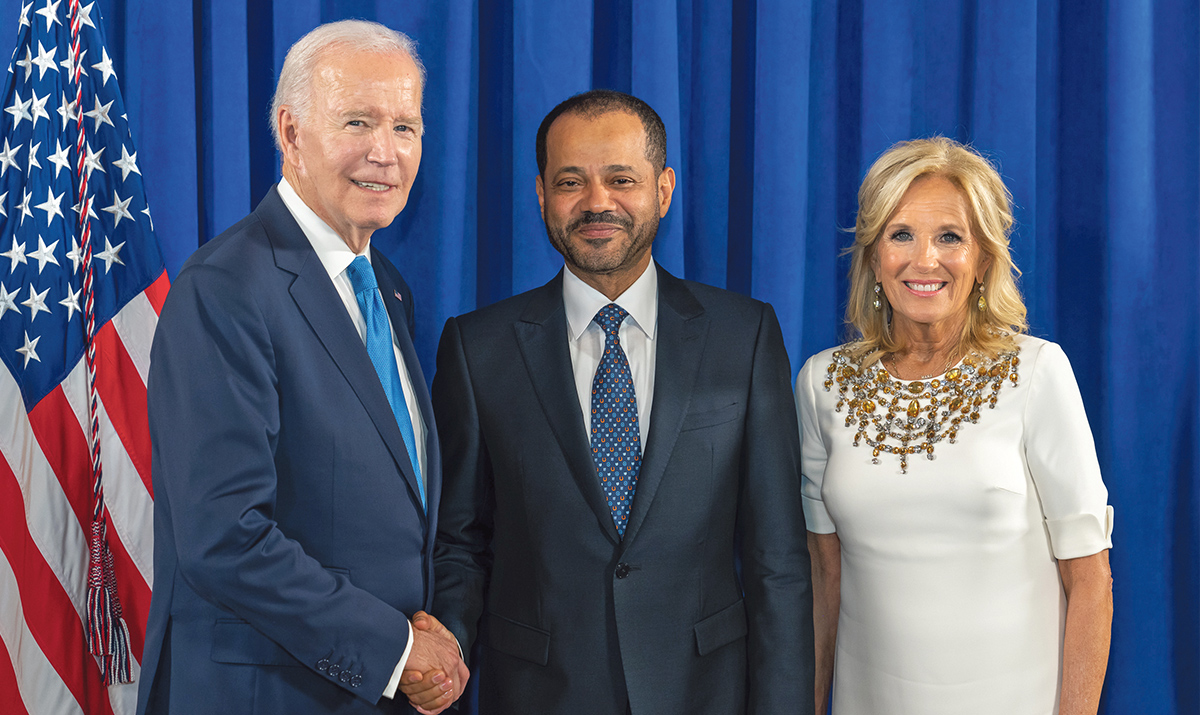
17 Nov The US marks Oman as bridge to the Gulf
Oman has become a prime target for American investments in the region based on new incentives and open trade relations
Oman’s relationship with the US can be traced all the way back to 1833 when the two countries signed the Treaty of Amity and Commerce, the first bilateral accord between the North American country and an Arab Gulf state. Collaborating closely ever since, the two nations have worked together on a range of issues, including counterterrorism, energy security and economic development.
Ties were further strengthened in 2006 when the US-Oman Free Trade Agreement was signed, a move that has helped tremendously with Oman’s efforts to diversify its economy away from oil and gas and to develop a host of more sustainable industries. One of only 20 countries in the world with this type of agreement in place with the US, it has led to the reduction of tariffs and trade barriers, while also allowing Omani businesses to export goods and services to the country. Since the agreement was put in place, Oman’s exports to the US have more than doubled with bilateral trade between the two countries reaching in excess of $4 billion during 2022, and the US is now the leading buyer of non-oil exports from the Sultanate.
Incentives have also been introduced that US investors can take advantage of when entering the market in Oman. “Our free trade agreement with the United States means US firms wanting to set up in Oman are treated as Omanis. They do not need other permission to come and establish a company here and partners are not required,” explains Nailesh Khimji, Director of the Khimji Ramdas Group. “Trade between the US and Oman is also tax-free due to the agreement; so whatever you produce in the US can be brought to Oman without any taxes.”
As Oman continues to diversify its economy, it is focusing on key sectors such as tourism, manufacturing and logistics. The country has also been making strides to develop its renewable resources, with a target to generate 10% of all its electricity through renewables by 2025. The hope is that the US will continue to play a major role across all of these industries and important deals between the two countries have already been struck.
“US companies have shown interest in exploring many different segments in Oman, especially in research and development,” reveals Khalid Al Balushi, CEO of TANMIA. “For example, there is a partnership between the government and the University of Arizona that aims to develop technologies for the food industry and this is done through one of the projects with Nakheel Oman Development Company. Utilizing new technologies and research in the US and transferring know-how in Oman will be critical in the next few years, and the government is trying its best to scale up these types of investments.Investors look at opportunities across the world and require hard data to evaluate returns. Prepared options mean investors spend less time analyzing terms. The more attractive we make our opportunities, the more added value we can create through linkages between different industries and this is what we are focused on doing at TANMIA.”
While investment from the US is steadily growing year-on-year, Abdulsalam Al Murshidi, President of the Oman Investment Authority, is hopeful that more American companies will choose to explore the numerous opportunities available in the Sultanate.
“We need to see more American investors entering Oman. We have kept the country hidden for a long time and we need to work on promoting our nation,” says Al Murshidi. “Our region has larger economies that naturally attract the attention of public investors. However, we must still remind potential partners of the good value propositions we offer. Anything manufactured in Oman is welcome in most countries; we have no restrictions. Additionally, our geographic location makes Oman an excellent platform to service the Indian subcontinent and East Africa, a market of around one billion customers surrounding us. Oman is a very safe location. We also have a 40% surplus in electricity production which is ready to be utilized immediately. Furthermore, we offer a stable financial and banking system. Investors also benefit from a robust taxation regime. Oman is a perfect destination for partners to service both the Omani economy and the region.”
